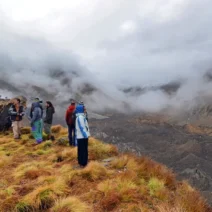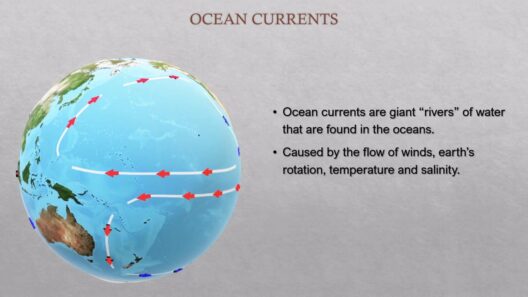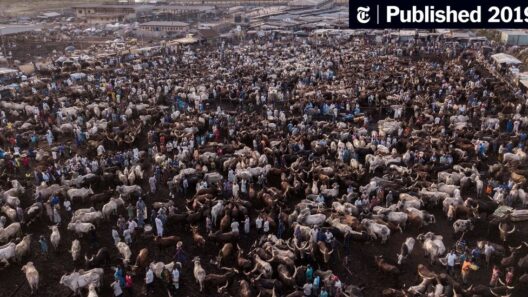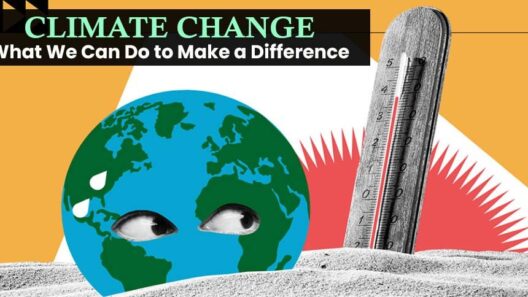What if you could peer behind the curtain of our planet’s complex systems? What is climate science if not an intricate tapestry woven from the threads of meteorology, ecology, chemistry, and social science? At its core, climate science investigates not only the Earth’s weather patterns but also the very forces driving them. It seeks to elucidate the mysteries that govern our environment, exploring questions that range from the microcosmic—such as how aerosols influence cloud formation—to the macrocosmic, encompassing global circulatory systems like the jet stream. This multifaceted discipline is essential as we grapple with a changing climate and its far-reaching implications.
The foundation of climate science rests on understanding the atmosphere—the gaseous envelope surrounding Earth. The atmosphere, composed primarily of nitrogen and oxygen, functions as a protective shield while facilitating various phenomena. Through the study of atmospheric layers, scientists uncover the mechanics of weather and climate. Including phenomena like the greenhouse effect, wherein certain gases trap heat, maintaining life-sustaining temperatures. Such an understanding is imperative, especially as anthropogenic activities exacerbate natural processes, thereby reshaping our global climate.
One playful question often posed within the field is, “How does the Earth’s temperature fluctuate with even the slightest changes in atmospheric composition?” This inquiry leads us to examine greenhouse gases and their roles. Carbon dioxide, methane, and nitrous oxide are merely a few of the gases participating in this planetary dance. Their concentrations have increased dramatically since the Industrial Revolution, with societies increasingly reliant on fossil fuels and land-use changes. The result? A significant rise in global temperatures, prompting scientists to delve deeper into the repercussions of these alterations.
Delving into the mechanics of climate change reveals the concept of feedback loops—whereby changes in the climate system can exacerbate existing conditions. Take, for example, the melting of polar ice caps. As ice diminishes, less sunlight is reflected back into space, causing ocean waters to absorb more heat. This deeper warming leads to further ice melt, perpetuating a cycle of change that scientists are racing to comprehend. Additionally, the interplay between biomes and climate—whether examining how forests sequester carbon or how droughts affect biodiversity—enhances our holistic understanding of Earth’s intricate systems.
Climate models serve as a crucial aspect of climate science. These sophisticated tools simulate the interactions between various components of the Earth system, providing insights into potential future scenarios based on differing levels of greenhouse gas emissions. Faced with the challenge posed by the current trajectory of climate change, scientists rely on these models to predict how changes in one aspect—such as ocean temperatures—can have cascading effects on global weather patterns. However, these models are also inherently limited, as they must simplify complex Earth systems, which can lead to uncertainties in predicting localized impacts.
One might ponder, “How can we leverage this knowledge for meaningful change?” This question highlights the intersection of science and society. To catalyze action, climate science must not only inform policy but also engage the public. Effective communication serves as a bridge, translating scientific findings into more digestible narratives that resonate with communities. For instance, as social media platforms proliferate, there exists a formidable opportunity to disseminate climate information widely, facilitating public discourse around sustainability practices, renewable energy, and conservation efforts.
The role of climate scientists also extends beyond research; it encompasses advocacy for science-based policy decisions. As tangible threats such as sea-level rise and increasingly severe weather events become more prevalent, the need for responsible governance becomes urgent. Policymakers often rely on scientific input to craft regulations that address pressing issues like emissions reductions and renewable resource development. Herein lies a distinctive challenge: ensuring that climate science remains apolitical and anchored in empirical evidence while navigating the labyrinthine corridors of social agendas.
Equally daunting is the task of addressing the social dimensions of climate change. Vulnerable communities often bear the brunt of environmental catastrophes, making climate justice a vital concern interwoven with climate science. As nations negotiate solutions at international conferences, questions of equity arise: Who should be responsible for adapting to climate impacts? How can we ensure that the most marginalized populations receive the resources they need to mitigate these effects? Answering these queries requires a collective understanding that transcends scientific boundaries, merging climate data with socio-economic considerations.
Education emerges as a pivotal instrument in addressing climate change. Engaging curricula that incorporate climate science can foster environmental literacy from an early age. Universities create platforms for interdisciplinary approaches, blending climate science with other fields such as engineering, political science, and public policy. By cultivating a generation attuned to climate complexity, society can better prepare for the challenges it faces—a compelling imperative in an era defined by urgent climate action.
In conclusion, climate science is a rich field of study that unlocks the mysteries of Earth’s weather systems and the interconnections within them. As we confront an increasingly uncertain future shaped by climate change, understanding the nuanced factors at work becomes not just a scientific pursuit but a moral obligation. Engaging with climate science allows individuals and communities to challenge the status quo and actively participate in shaping a more sustainable world. Can we open our eyes to these mysteries and embrace the responsibility to steward our deteriorating environment? The answer lies at the intersection of knowledge, action, and collaboration.







